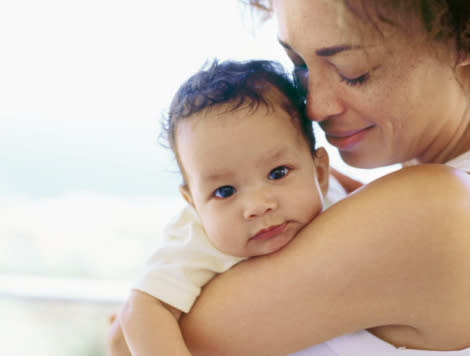The Best Country for Raising Kids? Report Says It's Not the United States

The United States may be a wealthy, privileged, industrialized nation, but when it comes to being an ideal place to raise a family, it ranks well below several European countries. Take into account non-existent parental leave policies, low preschool enrollment rates, and high teen-pregnancy rates and it's rank falls even further, according to Save the Children, an independent organization dedicated to helping children around the world.
Related: The deadliest states for kids to live in
In Save the Children's 13th State of the World's Mothers Report, released today, the United States ranks 25th out of 165 countries overall. That's up six spots from its 31st place showing last year, largely thanks to improvements in education rates for girls, Carolyn Miles, president and CEO of Save the Children told Yahoo! Shine in an interview.
"The longer a girl stays in school, the later she'll have a child, and the healthier the child and the mother will be," Miles said.
The report includes a "Mother's Index," which ranks 165 countries based on indicators of mother and child well-being, including education rates for girls, the number of women in politics, child and maternal mortality rates, the number of attended births, and earned income rates, and more. In spite of the United State's status as a world leader, certain issues -- high teen pregnancy rates, poverty levels, and lack of access to health care -- continue to keep the country out of the index's Top 10.
"In the United States, mothers face a one in 2,100 risk of maternal death -- the highest of any industrialized nation," the report points out. "Only three developed countries -- Albania, Moldova, and the Russian Federation -- perform worse than the United States on this indicator."
"A woman in the US is more than seven times as likely to die of a pregnancy-related cause in her lifetime than a woman in Italy or Ireland," Miles adds. "When it comes to the number of children enrolled in preschools or the political status of women, the United States also places in the bottom 10 countries of the developed world."
The fact that the U.S. is the only industrialized nation not to offer some form of paid maternity leave is one factor that pushes the U.S. lower on the list. And while the Obama Administration's Affordable Care Act has helped many poor women obtain pre-natal care, Miles says, the mortality rates for children under age 5 are still far too high, with eight deaths per 1,000 children. "There are 40 countries that perform better than the U.S. on that indicator," she explains.
Most of the countries on the index's Top 10 list are in Europe, where paid maternity leave is the norm, breast-feeding is widely accepted, and government-backed support programs for new parents abound. With high levels of female education, women in politics, and one of the most generous family leave policies in the developed world, Norway took top honors; it also has the highest ratio of female-to-male earned income, the report said, and the second-lowest mortality rate for children under age 5 in the world.
At the bottom of the list was the Republic of Niger in West Africa, which performed poorly across all indicators of maternal and child health and well-being. Most of the lowest-ranked countries are in sub-Saharan Africa, where conflict and malnutrition are rampant. "The big surprise for me was the disparity between the Top 10 and the Bottom 10," Miles says of the report.
The differences between the two groups are heart-breaking. In Norway, girls receive nearly 18 years of formal education, versus just four years in Niger. Eighty-two percent of Norwegian women routinely use contraception, compared to five percent of women in Niger. The risk of childhood death in Norway is one out of 333; in Niger, it's one out of seven. "In Niger," Miles points out, "virtually every mother will lose a child before age 5."
Iceland, Sweden, New Zealand, Finland, Denmark, Australia, Belgium, Ireland, the Netherlands, and the United Kingdom rounded out the top 10 on the Mother's Index; the Democratic Republic of the Congo, South Sudan, Sudan, Chad, Eritrea, Mali, Guinea-Bissau, Yemen, and Afghanistan were also in the bottom 10.
Nearly a third of all children who live in the lowest-ranked countries on the Mother's Index suffer from malnutrition, the report says. While breast feeding is a matter of choice -- or fodder for the Mommy Wars -- for many moms in the United States, in these poorer countries it can be the difference between life and death.
"In the developing world, if you don't have clean water or if mothers don't believe that breast milk is the only thing that kids really need for the first six months of life… kids can become very ill and die."
At least five children die each minute from issues relating to malnutrition, and the report recommends some simple solutions -- including breast-feeding and safe hygiene practices -- that can help solve the problem. Save the Children is urging world leaders to commit to ending preventable child deaths (you can sign their petition here).
"One of our big successes has been in the area of child survival," Miles says. "A lot of our work is around making sure that kids make it to their 5th birthday."
Copyright © 2012 Yahoo Inc.
Also on Shine:
Australian company IAG rewards moms for returning to work
Planning 30 days of meals at Whole Foods on a poverty-level budget
Why women quit breastfeeding
